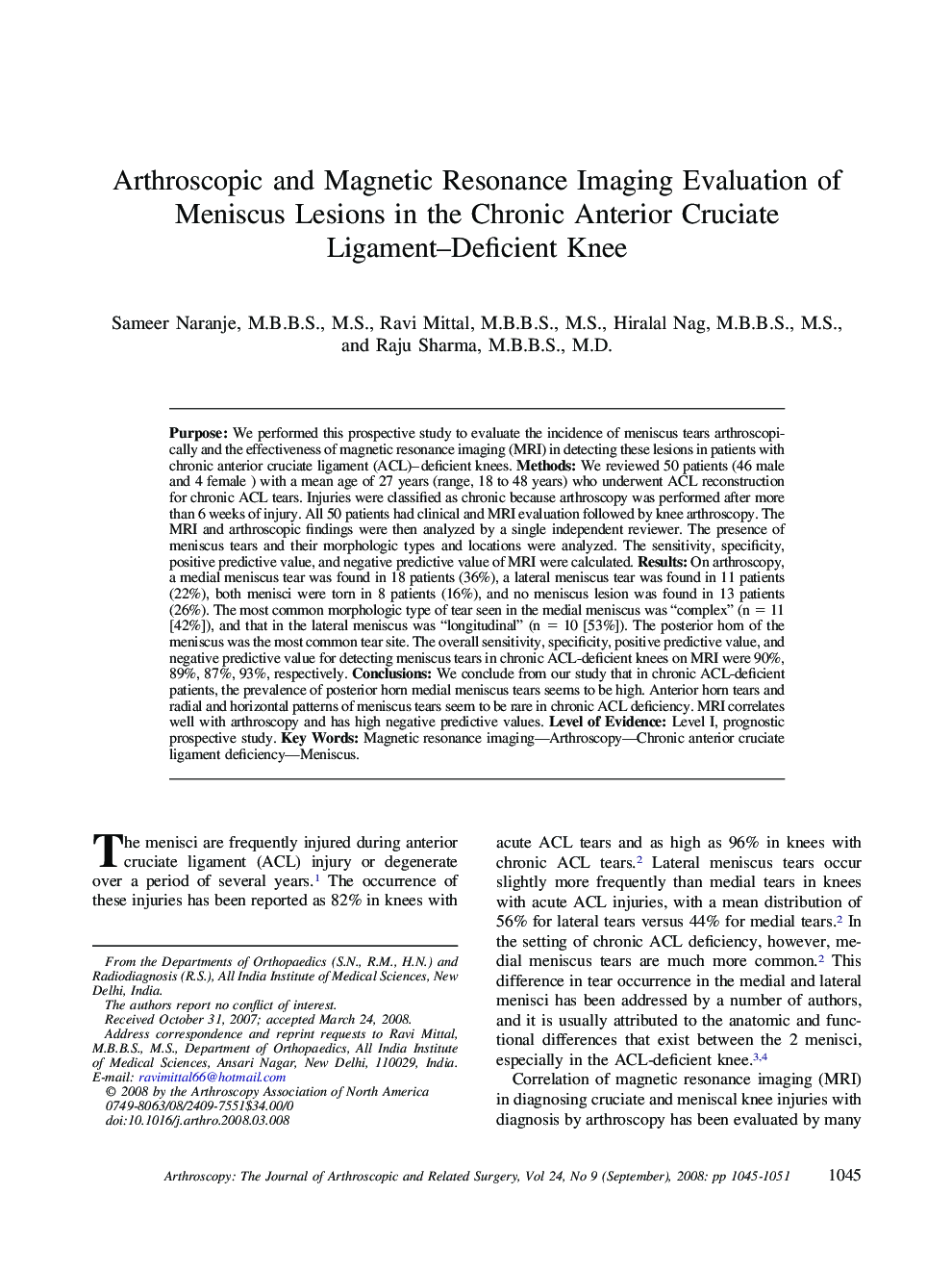| Article ID | Journal | Published Year | Pages | File Type |
|---|---|---|---|---|
| 4045910 | Arthroscopy: The Journal of Arthroscopic & Related Surgery | 2008 | 7 Pages |
Purpose: We performed this prospective study to evaluate the incidence of meniscus tears arthroscopically and the effectiveness of magnetic resonance imaging (MRI) in detecting these lesions in patients with chronic anterior cruciate ligament (ACL)–deficient knees. Methods: We reviewed 50 patients (46 male and 4 female) with a mean age of 27 years (range, 18 to 48 years) who underwent ACL reconstruction for chronic ACL tears. Injuries were classified as chronic because arthroscopy was performed after more than 6 weeks of injury. All 50 patients had clinical and MRI evaluation followed by knee arthroscopy. The MRI and arthroscopic findings were then analyzed by a single independent reviewer. The presence of meniscus tears and their morphologic types and locations were analyzed. The sensitivity, specificity, positive predictive value, and negative predictive value of MRI were calculated. Results: On arthroscopy, a medial meniscus tear was found in 18 patients (36%), a lateral meniscus tear was found in 11 patients (22%), both menisci were torn in 8 patients (16%), and no meniscus lesion was found in 13 patients (26%). The most common morphologic type of tear seen in the medial meniscus was “complex” (n = 11 [42%]), and that in the lateral meniscus was “longitudinal” (n = 10 [53%]). The posterior horn of the meniscus was the most common tear site. The overall sensitivity, specificity, positive predictive value, and negative predictive value for detecting meniscus tears in chronic ACL-deficient knees on MRI were 90%, 89%, 87%, 93%, respectively. Conclusions: We conclude from our study that in chronic ACL-deficient patients, the prevalence of posterior horn medial meniscus tears seems to be high. Anterior horn tears and radial and horizontal patterns of meniscus tears seem to be rare in chronic ACL deficiency. MRI correlates well with arthroscopy and has high negative predictive values. Level of Evidence: Level I, prognostic prospective study.
